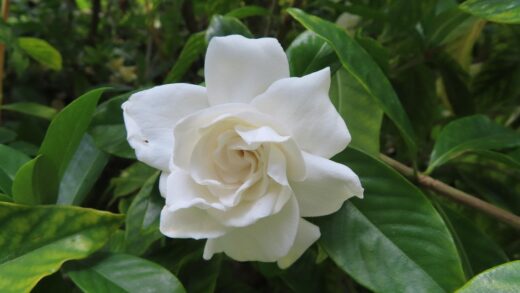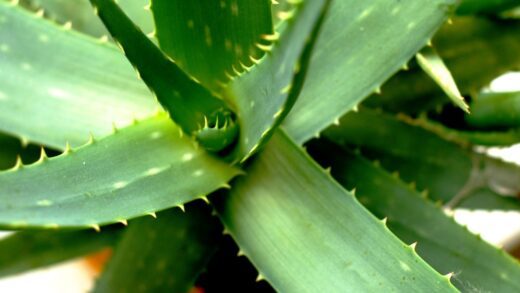Providing the appropriate amount of water is a delicate balancing act in the cultivation of Daphne laureola. This woodland native is fundamentally adapted to soils that remain consistently cool and moist throughout the year, yet it possesses a deep-seated intolerance for saturated, waterlogged conditions. The key to successful irrigation lies in understanding this preference and striving to replicate the steady hydration provided by a forest floor, which is rich in organic matter and sheltered from the drying effects of sun and wind. Overwatering is a far more common and fatal mistake than underwatering, as the plant’s sensitive root system is highly susceptible to fungal rots that thrive in anaerobic, overly wet soil.
A newly planted spurge laurel requires the most diligent attention to its water needs. During its first full growing season, the plant is focused on establishing a deep and extensive root system, which is essential for its long-term resilience and drought tolerance. In this crucial period, the soil should not be allowed to dry out completely. Regular checks, especially during warmer months or dry spells, are necessary. A deep, thorough soaking that moistens the entire root zone is infinitely more beneficial than frequent, shallow sprinklings, as it encourages roots to grow deeper in search of moisture, making the plant more self-sufficient over time.
Once a spurge laurel is well-established, typically after its first or second year in the ground, it becomes surprisingly resilient to periods of dryness. Its leathery, evergreen leaves are adapted to conserve moisture, and a well-developed root system can access water from deeper within the soil profile. In a suitable shady location with a good layer of organic mulch, an established plant will often require very little supplemental irrigation, surviving well on natural rainfall in many temperate climates. However, during extended periods of drought or extreme heat, even mature plants will benefit from an occasional deep watering to prevent stress.
The context of the planting situation also heavily influences watering needs. A spurge laurel grown in a container will have significantly different requirements compared to one planted in the garden border. Container soil heats up and dries out much more quickly than garden soil, necessitating more frequent monitoring and watering, even for established plants. The material of the pot, the type of potting mix used, and its exposure to sun and wind will all play a role in how often it needs a drink. The fundamental principles remain the same: water thoroughly when needed, and always allow the top layer of soil to dry slightly before watering again.
Understanding its natural water cycle
To truly grasp the watering needs of Daphne laureola, one must look to its natural woodland habitat. In these environments, the soil is rarely bone dry or completely saturated. The dense canopy of trees overhead intercepts much of the heavy rainfall, allowing it to drip down more gently and percolate slowly into the ground. This canopy also provides shade, which reduces evaporation from the soil surface, keeping it cooler and more consistently moist. This natural system creates a stable, moderately damp environment that the plant has evolved to thrive in.
More articles on this topic
The soil itself plays a vital role in this water cycle. Forest soil is typically rich in humus and leaf litter, which acts like a giant sponge. This organic matter absorbs water during rainy periods and then releases it slowly over time, providing a steady source of moisture for the plant roots. It also promotes excellent drainage, allowing excess water to pass through the soil profile quickly, preventing the roots from sitting in stagnant water. This combination of moisture retention and good drainage is the ideal that gardeners should aim to create.
The seasonal variations in its native climate also dictate its water needs. The plant experiences cool, wet winters where the soil is naturally recharged with moisture, followed by warmer summers where the tree canopy is in full leaf, providing maximum shade and reducing water loss. It is adapted to this rhythm of a moist growing season and a dormant period. Gardeners should aim to follow this pattern, ensuring ample moisture during spring and summer when the plant is actively growing and reducing supplemental watering in the cooler, wetter months of autumn and winter.
By understanding these natural processes, you can make more informed decisions about irrigation. The goal is not just to provide water, but to foster a soil environment that manages water effectively. This means incorporating plenty of organic matter, applying a surface mulch to mimic the leaf litter layer, and siting the plant in a shady, sheltered spot. When you get this environment right, your watering duties become much simpler and more intuitive, as the soil itself does much of the work in regulating moisture levels for the plant.
Irrigation for newly planted shrubs
The period immediately following planting is the most critical time for managing the water needs of a spurge laurel. The plant’s root system has been disturbed and is not yet extensive enough to efficiently draw water from the surrounding soil. During this establishment phase, which can last from several months to a full year, your role is to provide consistent and reliable moisture to prevent transplant shock and encourage vigorous new root development. This requires a more hands-on approach than will be needed for a mature, established plant.
More articles on this topic
For the first few weeks after planting, check the soil moisture every two to three days. The best method is to feel the soil a few inches below the surface, near the edge of the root ball. If it feels dry, it is time to water. When you do water, do so deeply and slowly, allowing the water to penetrate well into the soil profile. A trickle from a hose at the base of the plant for a good period of time is more effective than a quick blast from a watering can. The aim is to moisten the entire root zone and the surrounding soil to encourage outward root growth.
As the season progresses, you can gradually reduce the frequency of watering as the plant begins to establish itself, but continue to monitor it closely, especially during warm and windy weather. A good rule of thumb for the first summer is to ensure the plant receives the equivalent of about one inch of rainfall per week, either from precipitation or your hose. If you have applied a generous layer of organic mulch around the plant, this will significantly help in retaining soil moisture and reducing the need for frequent watering.
It is crucial to avoid both underwatering and overwatering during this delicate period. Wilting leaves can be a sign of either too little water or, confusingly, too much water which has caused root rot and prevented the plant from taking up moisture. This is why checking the soil with your fingers is so important; it tells you the real story of the conditions around the roots. By providing consistent, deep watering during its first year, you are making a vital investment in the plant’s future health and its ability to withstand drought later in life.
Watering established plants
Once Daphne laureola has been in the ground for more than a year and is showing signs of healthy new growth, it is considered established. At this point, its watering needs decrease dramatically, and it becomes much more self-sufficient. An established spurge laurel, planted in a suitable shady location with humus-rich soil, can be remarkably drought-tolerant. Its extensive root system can now explore a larger volume of soil for moisture, and the protective shade and mulch layer will conserve water effectively. In many temperate climates, natural rainfall may be all that is required for much of the year.
The need for supplemental watering for an established plant is dictated almost entirely by the weather. During typical spring and autumn weather, you will likely not need to water at all. The time to intervene is during prolonged dry spells in the summer, especially when combined with high temperatures. Even then, you should not resort to a routine schedule. Instead, observe the plant and the soil. If the leaves start to look slightly dull or you see minor wilting at the end of a hot day, and the soil is dry several inches down, it is a clear signal that the plant would benefit from a drink.
When you do water an established plant, the principle of deep, infrequent watering is even more important. A thorough soaking that penetrates deep into the soil profile is what is needed. This encourages the roots to remain deep and strong. Light, frequent watering is detrimental as it only wets the top few inches of soil, encouraging the development of a shallow root system that is much more vulnerable to drought and heat stress. A single, deep watering session once every ten days to two weeks during a drought is far more beneficial than a light sprinkle every few days.
Always apply water directly to the soil at the base of the plant, avoiding the foliage as much as possible. Wet leaves, especially in shady and humid conditions, can create an ideal environment for fungal diseases like leaf spot to develop. Using a soaker hose or watering wand allows you to deliver water efficiently to the root zone without wetting the rest of the plant. By following these principles, you can support your established spurge laurel through dry periods without fostering dependency or creating conditions that could lead to disease.
Water needs in containers
Cultivating Daphne laureola in a container presents a unique set of challenges regarding water management. The limited volume of soil in a pot dries out much faster than garden soil, meaning container-grown plants require more frequent and vigilant watering, even when they are fully mature. The soil can become completely dry within a day or two during hot or windy weather. Therefore, a regular schedule of checking the moisture level is not just recommended, it is essential for the plant’s survival.
The best way to determine if a container plant needs water is to check the potting mix daily in warm weather. Insert your finger into the soil up to the second knuckle. If the soil feels dry at this depth, it is time to water. When you do water, do so thoroughly until you see water begin to drain from the drainage holes at the bottom of the pot. This ensures that the entire root ball has been moistened. Allow the pot to drain completely and never let it stand in a saucer full of water for an extended period, as this will lead to root rot.
The type of container can also influence watering frequency. Porous materials like terracotta or unglazed ceramic allow water to evaporate through their sides, causing the soil to dry out more quickly than in non-porous containers like plastic or glazed ceramic. While terracotta can be beneficial in preventing waterlogging, it does mean you will need to water more often. Regardless of the material, ensure the container has ample drainage holes to allow excess water to escape freely.
Watering needs will also change with the seasons for container plants. During the active growing season of spring and summer, the plant will require the most water. As growth slows in the autumn and the plant enters dormancy in winter, its water requirements will decrease significantly. During winter, the soil should be kept only slightly moist. Overwatering during dormancy is a major risk, so check the soil carefully and only water when it is approaching dryness. This careful, attentive approach is key to keeping a container-grown spurge laurel healthy year-round.
📷: Josep Gesti, CC BY-SA 4.0, via Wikimedia Commons


















